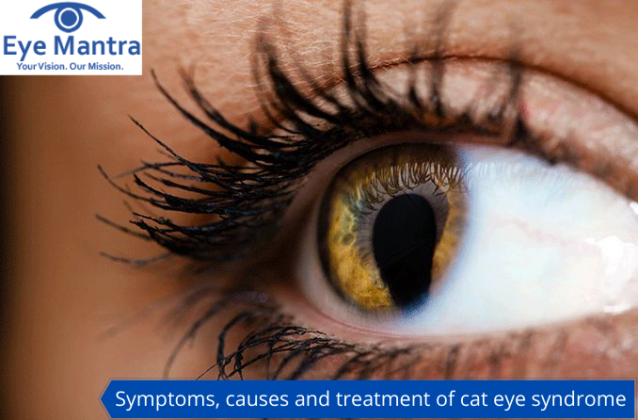
Cat Eye Syndrome, is a rare genetic condition that sparks curiosity and concern alike. Ever heard of it? Named for the distinctive eye shape some people with the condition have, it’s more than just about the eyes.
In this blog, we’re diving deep into what Cat Eye Syndrome is all about. We’ll cover the symptoms that range from the obvious to the less known, explore what causes it, answer your big question—can it affect your vision?—and discuss the treatment options available. So, whether you’re looking to understand the condition better or seeking information for someone close to you, read on!
Contents
Cat Eye Syndrome is a rare genetic condition, known for its distinctive chromosomal characteristics. This syndrome is a chromosomal disorder resulting from a duplication or trisomy of a part of chromosome 22.
The name “Cat Eye Syndrome” comes from one of its most recognizable signs—a peculiar eye shape that resembles a cat’s eye. This is due to a coloboma, a key feature of the syndrome, which occurs when normal tissue in or around the eye is missing.
Beyond the eye-related symptoms, Cat Eye Syndrome can affect multiple systems in the body. Individuals may experience a wide range of abnormalities in the eyes, ears, heart, kidneys, and skeletal system.
Understanding the genetic background of Cat Eye Syndrome is crucial for comprehending its diverse impacts. Currently, there’s no known method to prevent the chromosomal change that causes Cat Eye Syndrome, making awareness and early diagnosis vital for managing its symptoms and improving the quality of life for those affected.
Cat Eye Syndrome is caused by a genetic mutation involving chromosome 22. Specifically, the condition is most commonly associated with a partial trisomy or duplication of a segment of this chromosome.
However, the exact mechanisms by which this overexpression causes the specific features of the syndrome are not fully understood.
The occurrence of chromosome 22 duplication is usually random, meaning it can happen in any pregnancy without a clear cause. Most cases of Cat Eye Syndrome are not inherited from the parents but occur as a new (de novo) genetic event. However, in rare instances, the chromosomal change responsible for the syndrome can be passed from an affected parent to their child, leading to hereditary cases of Cat Eye Syndrome.
Impact on Vision:
Colobomas and Vision: The effect of a coloboma on vision depends on its location and size. Iris colobomas may have a minimal impact on vision, while colobomas affecting the retina or optic nerve can lead to significant visual impairment, including vision loss in severe cases.
Other Vision Issues: Beyond colobomas, individuals with CES may experience a range of other vision-related issues. These can include strabismus (misalignment of the eyes), nystagmus (involuntary eye movements), and nearsightedness or farsightedness. Each of these conditions can affect an individual’s visual acuity and quality of life.
Variability Among Individuals: Some individuals may have mild or no noticeable vision impairments, while others may require corrective lenses, surgery, or other interventions to manage more significant vision challenges.
Struggling with eye conditions can be daunting, but you don’t have to face it alone. If you’re experiencing any eye-related symptoms, don’t let them escalate. Take the first step towards clearer vision and better eye health today. Visit the Best Eye Hospital in India for expert care tailored to your needs.
Book your free appointment now! Give us a call at +91 9711116605 and let us help you see the world more clearly.